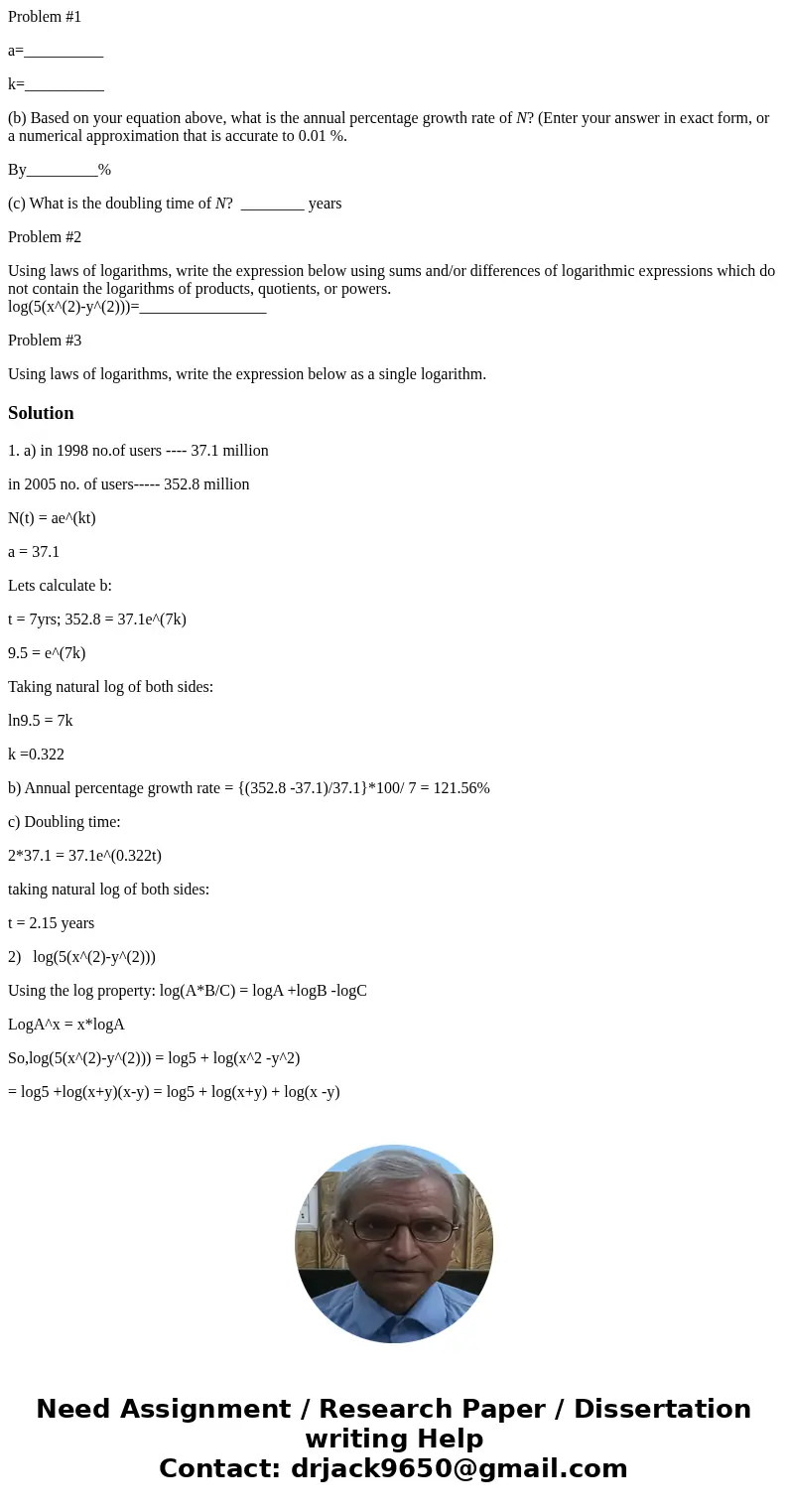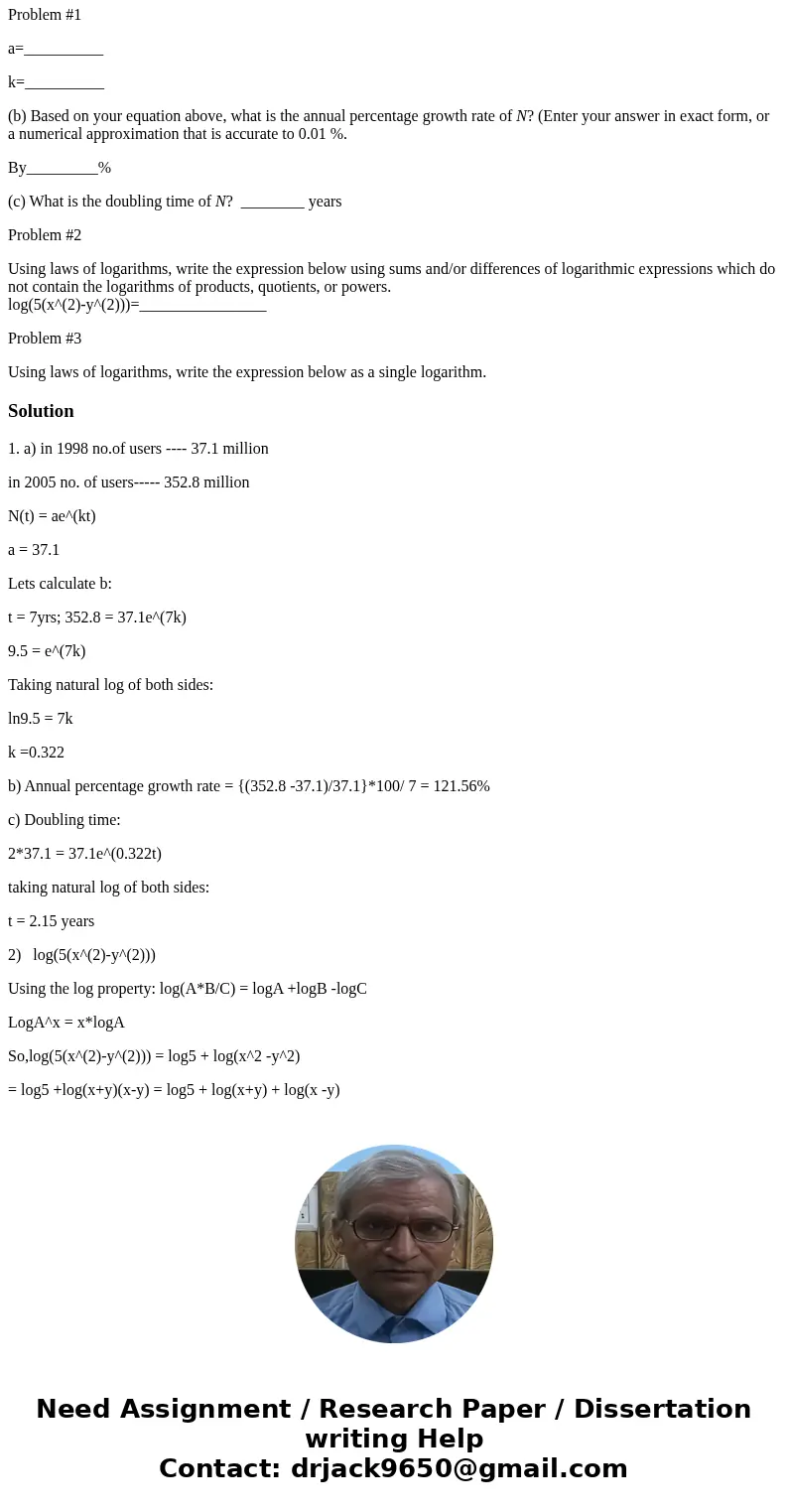Problem 1 a k b Based on your equation above what is the ann
Problem #1
a=__________
k=__________
(b) Based on your equation above, what is the annual percentage growth rate of N? (Enter your answer in exact form, or a numerical approximation that is accurate to 0.01 %.
By_________%
(c) What is the doubling time of N? ________ years
Problem #2
Using laws of logarithms, write the expression below using sums and/or differences of logarithmic expressions which do not contain the logarithms of products, quotients, or powers.
log(5(x^(2)-y^(2)))=________________
Problem #3
Using laws of logarithms, write the expression below as a single logarithm.
Solution
1. a) in 1998 no.of users ---- 37.1 million
in 2005 no. of users----- 352.8 million
N(t) = ae^(kt)
a = 37.1
Lets calculate b:
t = 7yrs; 352.8 = 37.1e^(7k)
9.5 = e^(7k)
Taking natural log of both sides:
ln9.5 = 7k
k =0.322
b) Annual percentage growth rate = {(352.8 -37.1)/37.1}*100/ 7 = 121.56%
c) Doubling time:
2*37.1 = 37.1e^(0.322t)
taking natural log of both sides:
t = 2.15 years
2) log(5(x^(2)-y^(2)))
Using the log property: log(A*B/C) = logA +logB -logC
LogA^x = x*logA
So,log(5(x^(2)-y^(2))) = log5 + log(x^2 -y^2)
= log5 +log(x+y)(x-y) = log5 + log(x+y) + log(x -y)


 Homework Sourse
Homework Sourse